Potrebujeme váš súhlas na využitie jednotlivých dát, aby sa vám okrem iného mohli ukazovať informácie týkajúce sa vašich záujmov. Súhlas udelíte kliknutím na tlačidlo „OK“.
ASTM E1578-13
Standard Guide for Laboratory Informatics
Automaticky preložený názov:
Štandardné Sprievodca pre laboratórne informatiku
NORMA vydaná dňa 1.8.2013
Informácie o norme:
Označenie normy: ASTM E1578-13
Poznámka: NEPLATNÁ
Dátum vydania normy: 1.8.2013
Kód tovaru: NS-42246
Počet strán: 47
Približná hmotnosť: 141 g (0.31 libier)
Krajina: Americká technická norma
Kategória: Technické normy ASTM
Kategórie - podobné normy:
Anotácia textu normy ASTM E1578-13 :
Keywords:
electronic laboratory notebook, ELN, IDS, information technology, instrument data systems, laboratory informatics, laboratory information management systems/laboratory information systems, LIMS/LIS, scientific data management systems, SDMS, ICS Number Code 35.240.80 (IT applications in health care technology)
Doplňujúce informácie
| Significance and Use | ||||||||||
|
4.1 Relevance—This guide is intended to educate those in the intended audience on many aspects of laboratory informatics. Specifically, the guide may: 4.1.1 Help educate new users of laboratory informatics; 4.1.2 Help educate general audiences in laboratories and other organizations that use laboratory informatics; 4.1.3 Help educate instrument manufactures and producers of other commonly interfaced systems; 4.1.4 Provide standard terminology that can be used by laboratory informatics vendors and end users; 4.1.5 Establish a minimum set of requirements for primary laboratory informatics functions; 4.1.6 Provide guidance on the tasks performed and documentation created in the specification, evaluation, cost justification, implementation, project management, training, and documentation of laboratory informatics; and 4.1.7 Provide high-level guidance for the integration of laboratory informatics. 4.2 How Used—This guide is intended to be used by all stakeholders involved in any aspect of laboratory informatics implementation, use or maintenance. 4.2.1 It is intended to be used throughout the laboratory informatics life cycle by individuals or groups responsible for laboratory informatics including specification, build/configuration, validation, use, upgrades, retirement/decommissioning. 4.2.2 It is also intended to provide an example of a laboratory informatics functions checklist. |
||||||||||
| 1. Scope | ||||||||||
|
1.1 This guide helps describe the laboratory informatics landscape and covers issues commonly encountered at all stages in the life cycle of laboratory informatics from inception to retirement. It explains the evolution of laboratory informatics tools used in today’s laboratories such as Laboratory Information Management Systems (LIMS), Electronic Laboratory Notebooks (ELN), Scientific Data Management Systems (SDMS), and Chromatography Data Systems (CDS). It also covers the relationship (interactions) between these tools and the external systems in a given organization. The guide discusses supporting laboratory informatics tools and a wide variety of the issues commonly encountered at different stages in the life cycle. The sub-sections that follow describe details of scope of this document in specific areas. 1.2 High-Level Purpose—The purpose of this guide includes: (1) helping educate new users of laboratory informatics tools, (2) provide a standard terminology that can be used by different vendors and end users, (3) establish minimum requirements for laboratory informatics, (4) provide guidance for the specification, evaluation, cost justification, implementation, project management, training, and documentation of the systems, and (5) provide function checklist examples for laboratory informatics systems that can be adopted within the laboratory and integrated with the existing systems. 1.3 Laboratory Informatics Definition—Laboratory informatics is the specialized application of information technology aimed at optimizing laboratory operations. It is a collection of informatics tools utilized within laboratory environments to collect, store, process, analyze, report, and archive data and information from the laboratory and supporting processes. Laboratory informatics includes the integration of systems, the electronic delivery of results to customers, and the supporting systems including training and policies. Examples of laboratory informatics include: Laboratory Information Management Systems (LIMS), Electronic Laboratory Notebooks (ELNs), Chromatography Data Systems (CDS), and Scientific Data Management Systems (SDMS). 1.4 Scope Considerations When
Selecting and Implementing Laboratory Informatics
Solutions—Many laboratories have determined that they need to
deploy multiple laboratory informatics systems to automate their
laboratory process and manage their data. Selection of an
informatics solution requires a detailed analysis of the
laboratory’s requirements rather than by choosing a product
category. It is important to include representatives from
Information Technology (IT) and Subject Matter Experts (SMEs), who
understand the needs of the laboratory, to be involved in the
selection and implementation of a laboratory informatics system to
ensure that the needs of the laboratory are met and that IT can
support it. Customers (internal and external) of laboratory
information should also be included in the laboratory informatics
solution design, to ensure there is full electronic integration
between systems.
1.5 The scope of this guide covers a wide range of laboratory types, industries, and sizes. Examples of laboratory types and industries are listed in the following: 1.5.1 General Laboratories: 1.5.1.1 Standards (ASTM, IEEE, ISO), and 1.5.1.2 Government (EPA, FDA, JPL, NASA, NRC, USDA, FERC). 1.5.2 Environmental: 1.5.2.1 Environmental Monitoring. 1.5.3 Life Science Laboratories: 1.5.3.1 Biotechnology, and 1.5.3.2 Diagnostic. 1.5.4 Healthcare Medical: 1.5.4.1 Devices, 1.5.4.2 Pharmaceuticals vet/animal, 1.5.4.3 Public health, and 1.5.4.4 Hospital LIS. 1.5.5 Heavy Industry Laboratories: 1.5.5.1 Energy and resources, 1.5.5.2 Manufacturing and construction, 1.5.5.3 Materials and chemicals, and 1.5.5.4 Transportation and shipping. 1.5.6 Food and Beverage Laboratories: 1.5.6.1 Agriculture, 1.5.6.2 Beverages, 1.5.6.3 Food, and 1.5.6.4 Food service and hospitality. 1.5.7 Public Sector Laboratories: 1.5.7.1 Law enforcement, 1.5.7.2 State and local government, 1.5.7.3 Education, and 1.5.7.4 Public utilities (water, electric, waste treatment). 1.6 Integration—The scope includes communication and meaningful data exchange between different laboratory informatics tools and other external systems (document management, chromatography data systems, laboratory instruments, spectroscopy data systems, Enterprise Resource Planning (ERP), Manufacturing Execution Systems (MES), Investigations/Deviations and CAPA management systems), and other integrated business systems (for example, clinical or hospital environments) provide significant business benefits to any laboratory and is discussed at a high level in this guide. 1.7 Life Cycle Phases—The scope of this guide is intended to provide an understanding of laboratory informatics tools’ life cycle from project initiation point to retirement and absolution. This guide was designed to help newer audiences in understanding the complexity in the relationships between different laboratory informatics tools and how to plan and manage the implementation project, while seasoned users may use the different life cycles to maintain existing laboratory informatics tools. Integrating additional tool(s) to the existing one(s) in today’s evolving laboratory informatics world adds constraints that need to be considered. The lifecycle discussion includes both the laboratory informatics solution lifecycle as well as the project lifecycle, which describes steps to a laboratory informatics solution. 1.7.1 The product lifecycle encompasses a specific laboratory informatics system and the expected useful life of that system before it needs to be replaced or upgraded. 1.7.2 The project lifecycle encompasses the activities to acquire, implement, operate, and eventually retire a specific laboratory informatics system. 1.8 Audience—This guide has been created with the needs of the following stakeholders in mind: 1.9 Out of Scope—This guide does not attempt to define the boundaries, as they continue to evolve, between the different types of laboratory informatics but rather focuses on the functionality that is provided by laboratory informatics as a whole. |
||||||||||
| 2. Referenced Documents | ||||||||||
|
Podobné normy:
Historická
1.6.2013
Historická
1.3.2013
Historická
1.3.2010
Historická
1.3.2013
Historická
1.4.2014
Historická
1.6.2009
Odporúčame:
Aktualizácia technických noriem
Chcete mať istotu, že používate len platné technické normy?
Ponúkame Vám riešenie, ktoré Vám zaistí mesačný prehľad o aktuálnosti noriem, ktoré používate.
Chcete vedieť viac informácií ? Pozrite sa na túto stránku.



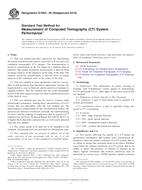 ASTM E1695-95(2013)..
ASTM E1695-95(2013)..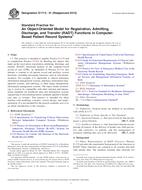 ASTM E1715-01(2013)..
ASTM E1715-01(2013)..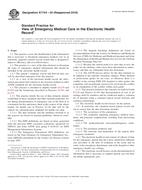 ASTM E1744-04(2010)..
ASTM E1744-04(2010)..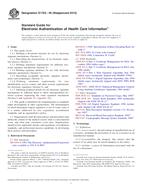 ASTM E1762-95(2013)..
ASTM E1762-95(2013)..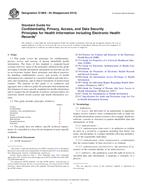 ASTM E1869-04(2014)..
ASTM E1869-04(2014)..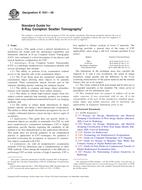 ASTM E1931-09
ASTM E1931-09
 Cookies
Cookies
